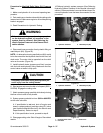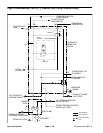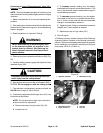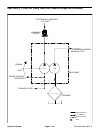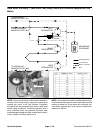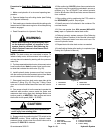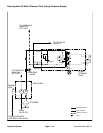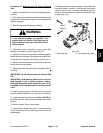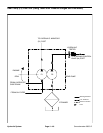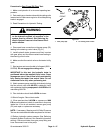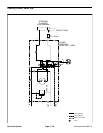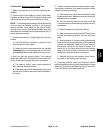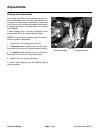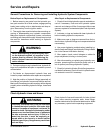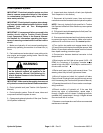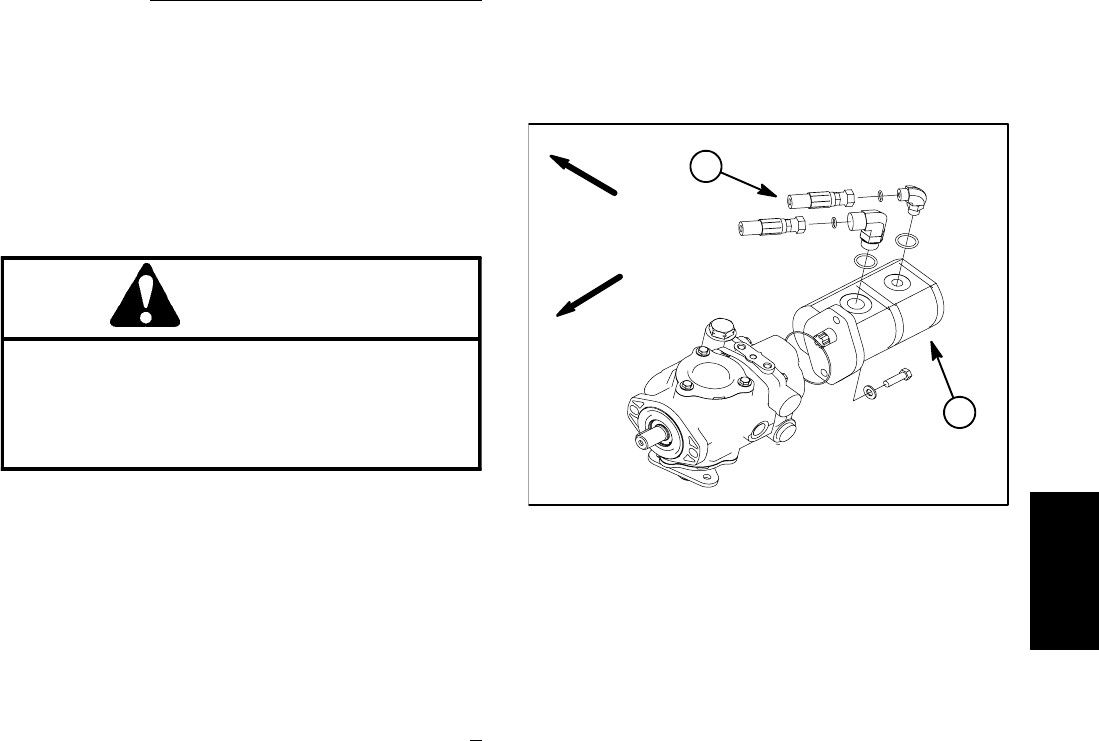
Groundsmaster 3505--D Hydraulic SystemPage 4 -- 45
Procedure for Steering and Lift Relief Pressure
Test:
1. Make sure hydraulic oil is at normal operating tem-
perature.
2. Park machine on a levelsurface with the cuttingunits
lowered and off. Make sure engine is off and the parking
brake is engaged.
3. Read Precautions for Hydraulic Testing.
WARNING
Before disconnecting or performing any work
on the hydraulic system, all pressure in the
system must be relieved. See Relieving Hy-
draulic System Pressure in the General Infor -
mation section.
4. Disconnect hose connection on gear pump (P2)
leading to the steering control valve (Fig. 30).
5. Install T-- connector with hydraulic pressure gauge in
series with the discharge of the gear pump and the dis-
connected hose leading to the steering control valve.
6. Make sure steering wheel is positioned so the rear
wheel points directly ahead.
7. Start engine and move throttle to full speed (3050 +
50 RPM).
IMPORTANT: Do not allow pressure to exceed 1500
PSI.
IMPORTANT: Hold steering wheel at full lock only
long enough to get a system pressure reading.
Holding the steering wheel against t he stop for an
extended period may damage the steering control
valve.
8. Watch pressure gauge carefully while turning the
steering wheel completely in one direction and holding.
9. System pressure should be from 845 to 995 PSI as
the relief valve lifts. Return steering wheel to the center
position.
10.Shut off engine. Record test results.
11.If specification is not met, repair or replace steering
control valve (relief valve in steering control valve is not
replaceable).
12.Relieve hydraulic system pressure (See Relieving
Hydraulic System Pressure in the General Information
section). Disconnect T--connector with test gauge from
pump connection and hose. Reconnect hydraulic hose
to gear pump (P2).
1. Gear pump (P2) 2. To steering control valve
Figure 30
FRONT
RIGHT
1
2
Hydraulic
System



